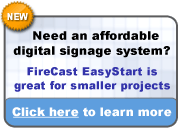It's no surprise that the debate over electronic billboards has moved to Detroit, the auto capital of the US. According to this article in the Detroit News, the usual arguments are being brought up by the usual suspects -- advertisers drooling over the prospect of serving up five or six ads in the space of one, and making changes instantaneously, governments and safety groups worrying about the impact on driver safety and decrying the additional visual clutter. In fact, the clip wouldn't be worth writing about except that I did learn this:
Detroit should brace for Las Vegas-style eyesores that could lead to traffic accidents, said Kevin Fry, president of Scenic America, a Washington-based opponent of the new signs.
"Your eye is drawn to these things every six seconds it's like a giant PowerPoint in the sky," he said. Fry said the billboards are likely to distract drivers from the road for more than two seconds -- the amount of time some studies have shown is dangerous for motorists to look at cell phones or iPods.
Ok, technically I learned two things. First, there's an anti-signage lobbying group called Scenic America, and second, billboards have to make their statement in less than two seconds. This short time frame is in keeping with P&G's study on the First Moment of Truth (FMOT), and also agrees with some of our own research on content use on digital signage (and specifically, retail media) networks.
My personal take on the situation is that in big cities, the march of roadside electronic billboards is unstoppable, though I can certainly see smaller municipalities banning them much as they've banned static roadside signage. Millions of drivers make their way down the Las Vegas strip or through Times Square without incident every year, and those areas are far more cluttered than the average road will ever be. So it seems like some amount of regulation (for things like brightness and animation, which certainly could cause accidents), and driver education/experience will probably make these devices no more dangerous than the typical static billboard.
Tags: electronic billboards, digital signage, out-of-home advertising



 Subscribe to this blog
Subscribe to this blog Follow Bill Gerba on Twitter
Follow Bill Gerba on Twitter